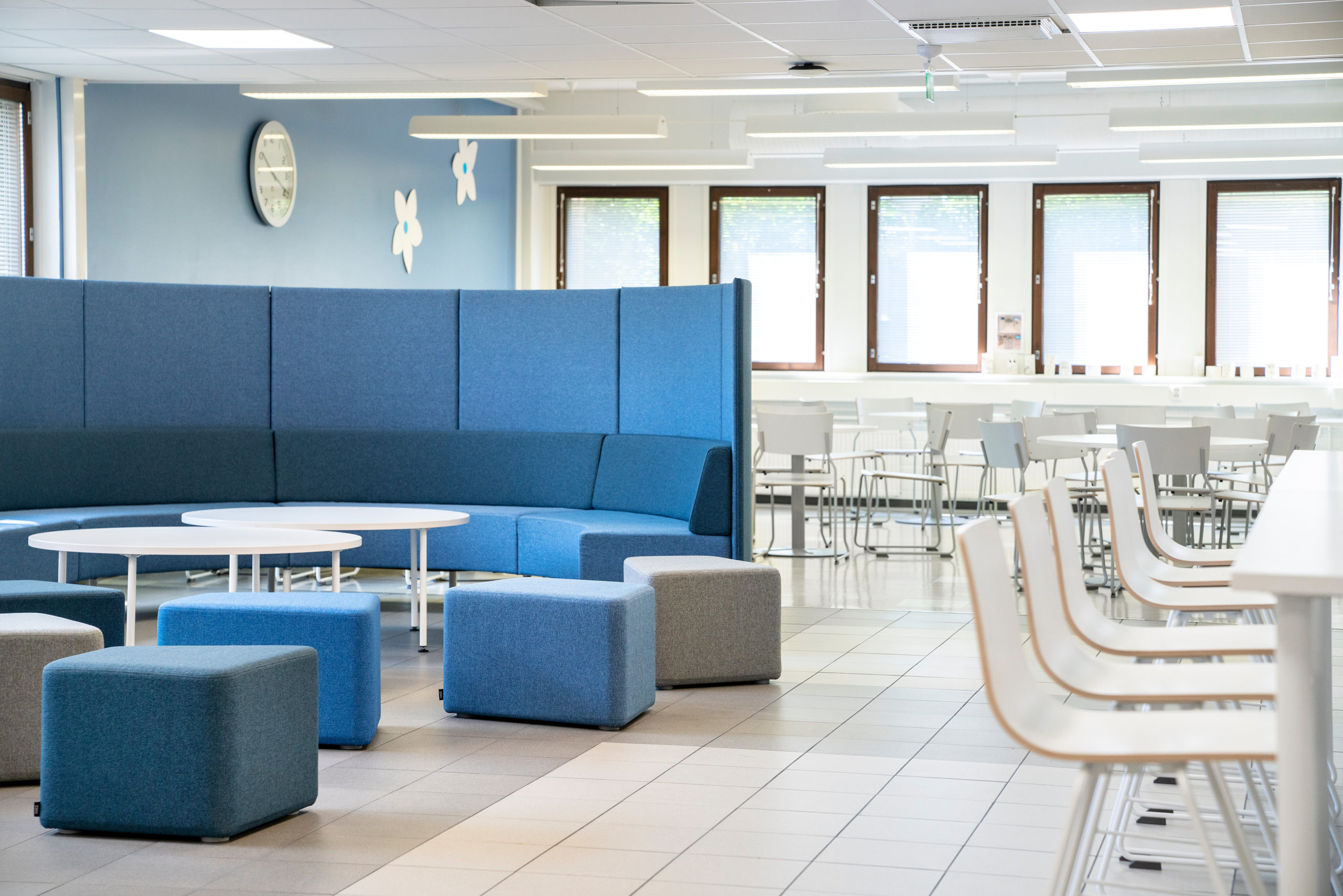An essential part in designing learning environments is the furniture. Many aspects need to be considered, from the pedagogical functions to the users’ needs. A multi-professional designing team guarantees the best results for the users of the school.
Pedagogical Principles Form the Base of the Design Process
The Finnish national core curriculum states: “Learning environments must support the development, learning and interactions of the individual and the community.” The curriculum covers the topic of learning environments at length and thus sets the principles for the school interior design. To understand more about the complex world of furnishing learning spaces, I interviewed Tiina Malste, the manager of learning design from ISKU Interior Oy.
The decision on the furniture and equipment used in the school is always done in cooperation with the people involved in the renovation or the construction of a new school building. A great deal of issues needs to be considered, starting from the number of users to the tiniest detail in each area of the building. Furniture choices shape the learning space, which has a direct impact to the users’ alertness and well-being. Especially in schools, the activities done in each room guide the use and the choice of furniture. The increasing use of digital tools in blended learning has changed the architectural image of the classrooms.
Diverse Users – Diverse Needs and Solutions
Many of the new schools in Finland should be called multi-purpose buildings instead. The same building complex might include facilities for grades K-12, cafeteria, library, student welfare centre, health centre, indoor sports area, etc. The building isn’t used only by the students and school staff, but by the local community. Taking into consideration the needs of all these users requires experience from the field.
Students form the largest single group of users, but the age and size of the individuals differ largely. Thus, the adaptability and movability of the furniture is important. By the principles of the national core curriculum, students are entitled to shape their own learning space to an extent. That is why light, safe and practical pieces of furniture are the main goal of design in ISKU, Malste explains.
For the adults, the school is their place of work. Teachers favour ergonomic and practical features in the furniture solutions. Items which are too complicated to use take time away from the teaching. On the other hand, to make the job of the cleaners easier, the furniture must be easy to move and clean. The use of antibacterial materials can be a good solution e.g. in the cafeteria.
Ecological, Pedagogical and Social Sustainability
The climate change and eco-friendliness are current themes in the whole education system in Finland. Thus, ecological sustainability must be acknowledged in the production of the school furniture. In ISKU the whole production process is made with the environment in mind. Reducing the airborne emissions released and managing the waste are some of the top priorities. The materials used are as non-toxic as possible, and the possibility to recycle the items is considered already in the designing phase.
In a school building, where there are hundreds of daily users, the furniture must be durable and last for decades. Although, it’s hard to predict, pedagogically sustainable furniture takes into consideration the needs of the future. Long-term solutions which won’t need replacement every other year, are good for the environment and the finances of the school.
Malste emphasizes that in ISKU all the manufacturing and designing is made in Finland. As a family-owned company, it values the local know-how and the well-being of the employees.
For those interested in designing modern learning environments, I recommend reading the Cookbook 2.0: Guidelines for modern, built learning environments. A guide authored by our other partner, Finnish Education Group FEG Oy in collaboration with ISKU.
Written by Polar Partners’ marketing intern: Juliaana Kärkkäinen
